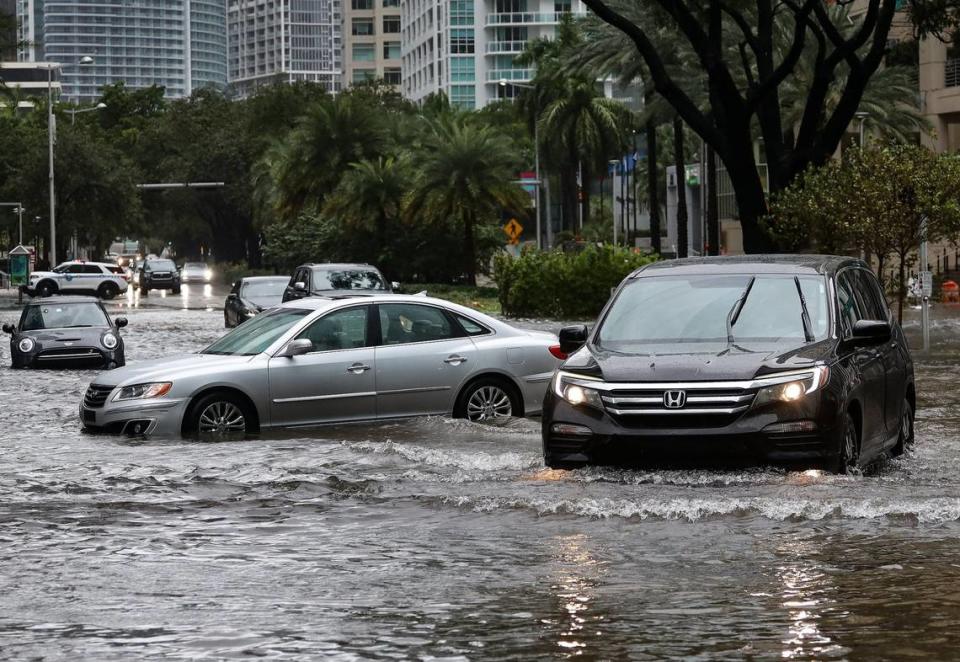Why did Miami’s Brickell become a gigantic lake that drowned streets and doomed cars?
The Brickell area became a gigantic lake Monday after Tropical Storm Eta dumped rain and more rain on South Florida.
The floodwaters drowned cars and kept commuters from getting from here to there.
But why did downtown Miami’s financial district become one of the worst flood zones in the region?

Miami Mayor Francis Suarez blames it on the pumps not doing the job. They apparently failed to suck up the floodwaters.
Two years ago, Miami opened a rebuilt Brickell pump station to help push all the water dumped by heavy rain and tidal flooding. But the pumps haven’t worked right, Miami Mayor Frances Suarez said, and were under repair as Eta arrived. Two temporary pumps didn’t do the job either.
“We have two permanent pumps with the capacity to remove 50,000 gallons of water per minute. The pump on Brickell Avenue, in particular, for some reason, has not worked during the last two events,” Suarez said Monday. “This time, we were doing emergency repairs, so we used portable pumps as a temporary fix. They obviously don’t have the same capacity as the permanent pump.”
The pump problems left Brickell streets underwater, with more than a foot of standing water and abandoned cars littering the intersections.

